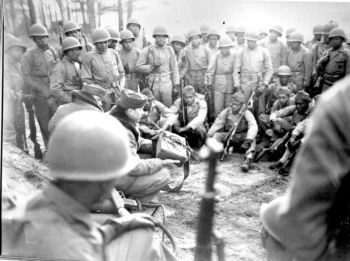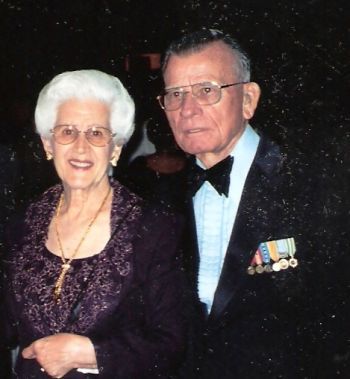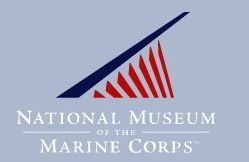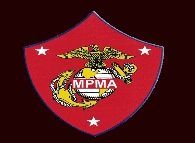
Publisher:
Bonnie King
CONTACT:
Newsroom@Salem-news.com
Advertising:
Adsales@Salem-news.com

~Truth~
~Justice~
~Peace~
TJP
Jun-19-2012 23:54

 TweetFollow @OregonNews
TweetFollow @OregonNews
Black Marine History Through White Marine Eyes
MGySgt Robert E. Talmadge, USMC (Ret) for Salem-News.comSept. 9, 1949 is a historic but little known date in the long history of our beloved Marine Corps. That is the day, 63 years ago, that the Montford Point Boot Camp for Marines of African Ancestry was closed, after seven years of operation. -
Edited by Coral Anika Theill
 Montford Point Marine at Iwo Jima |
(KANE'OHE, Hawaii) - Black Marines took their place in our Corps history, albeit initially a brief place, during the Revolutionary War. They served in small numbers in both the Continental and State navies and armies. According to surviving muster and pay rolls, there were at least three blacks in the ranks of the Continental Marines and ten others who served as Marines on ships of the Connecticut, Massachusetts and Pennsylvania navies. It is probable that more served, but no records exist on any of them.
I had learned in boot camp that during the Revolutionary War, when the Marine Corps was first formed by direction of the Second Continental Congress, it would consist of two battalions of Marines with a suitable number of officers for command billets. Initially, the Congress anticipated that the personnel for the Marine Corps would be furnished by General Washington from his own Continental Army. However, General Washington had a shortage of men and certainly none to spare for this newly formed Marine Corps. The Marines had to recruit their own personnel.
The first recorded black Marine was John Martin, or Keto, a slave of a certain William Marshall of Wilmington, Delaware, recruited without the knowledge or permission of his owner. (Even early on, Marine Recruiters learned how to fill their quotas.) Marine John Martin went down with his ship, the Continental Brig Reprisal, when it foundered off of the Newfound-land Banks in October of 1777.
The second black Continental Marine, Isaac Walker, was enlisted on 27 August, 1776 in Captain Robert Mullan’s Philadelphia company of Continental Marines, followed on 1 October by a recruit listed simply as “Orange…Negro”. Both were still on the company rolls as of 1 April 1777 and it is quite possible that they served with Mullan’s Company at the second battle of Trenton on 2 January 1777 and in the Battle of Princeton the next day.
These few black Marines were pioneers, who were not followed by others until 1942. Within a year of the Treaty of Paris, ending the Revolutionary War on 11 April, 1783, the Continental Marine Corps ceased to exist. The United States Marine Corps was not officially established until 1797, when the first three authorized frigates were built. Marines were again recruited for duty aboard those ships.
[United States Marine Corps has continued to observe November 10, 1775 as its birthdate, when it was established by the Second Continental Congress. The United States Navy picked up their birthdate as of 1798. That is why the Marine Corps Flag is flown to the left of the Navy Flag (senior position after the Army) at ceremonies and in parades.]
One of the first orders issued by the new Commandant, Major William Ward Burroughs (under the orders of the Secretary of War), was to forbid the enlistment of blacks, mulattoes or Indians. Thus for one hundred and fifty-three years, no blacks were enlisted into the Marine Corps.
In 1942, under pressure from several fronts, the Marine Corps was forced into accepting Americans of African ancestry into the Marine Corps. Because of those 153 years of an exclusively, all white Marine Corps, it was not easy for things to work out the way people expected them to.
Following the examples of other services, a separate camp was set up for black recruits in the newly acquired Marine base at Camp Lejeune, North Carolina in a section of the base near Jacksonville, N.C., named Mumford Point (later changed to Montford Point, and much later, Camp Johnson), a new boot camp was built that would serve as the home for black Marines for seven years.
But the new recruits were determined to be as good as any Marine who ever wore the Globe/Eagle/Anchor insignia. And more than that, their drill Instructors would work to ensure that they made the grade as Marines.
Initially, and by necessity, the drill instructors and officers were all white Marines. But primarily, due to the demand for men in the combat units, it was decided early on to screen the new recruits throughout their training, looking for those who showed outstanding leadership potential. These would eventually become the Montford Point Drill Instructors.
The recruits thought that things would be easier under their own black drill instructors, but they, as most recruits seem to be, were wrong. The new black drill instructors were tougher on them than the white drill instructors, and were determined that each of their platoons would be the best - a credit to the Corps and their race. Failure was not an option!
Among the segregated units that were organized and trained there, were the 51st and 52nd Defense Battalions and later Ammunition Companies and Supply Companies.
Members of these units would serve honorably and faithfully, sometimes alongside their fellow white Marines, in many cases earning respect for how they performed their duties and not by the color of their skin.
They served, for example, at Peleliu, Saipan, Iwo Jima and Okinawa. The Japanese bullets and grenades did not have color-coded targets marked on them, and many Black Marines fought and shed their blood. A number of them were killed in action alongside their white brother Marines.
 |
After the war was over, activity at Montford Point declined, with fewer blacks recruited. Eventually, the Marine Corps came to the conclusion that the expense of operating a separate boot camp for black Marines was not economically feasible, neither in monetary nor manpower limitations. So on that historic day, Sept. 9, 1949, the Montford Point Camp was closed down and all recruits were sent to Parris Island, although still being trained in segregated platoons. But the handwriting was on the wall and in very short order all recruits, regardless of color, were assigned to training in integrated platoons. All would not be peaches and cream — problems would arise and rocks and shoals would surface, but with the closing of the Montford Point Camp, the Marine Corps had truly come of age. We would eventually reach that point where all Marines, male or female, of whatever color or race, would be Green Marines, nothing less would do.
Bob Talmadge is a retired United States Marine Corps Master Gunnery Sergeant. The author acknowledges the History and Museums Division, HQMC, for their assistance and their two outstanding publications,
“Blacks in the Marine Corps, the Stories of Montford Point Marines,” and “Pride, Progress and Prospects, the Marine Corps Efforts to Increase the Presence of African-American Officers (1970-1995),” where much of the information in this article is drawn from.
Related Articles:
From Segregation to a Single Corps of “Green Marines”
Exclusive Interview with MGySgt Robert E. Talmadge, USMC (Ret) by Coral Anika Theill
WWII Montford Point Marines Receive Congressional Gold Medal - June 19, 2012 by Coral Anika Theill
 Bob and his wife, Rose, at Marine Corps Birthday Ball |
...always another hill or beach to storm and we will take this one too. “The two smartest things I ever did in my 82 years was to enlist in the Marine Corps and marry the former Rose Marie Pascale of Adeline Street in New Haven, CT - not necessarily in that order,” Bob says proudly. Bob and his wife, Rose, celebrate their 60th anniversary this year.
He has recently had to deal with several health challenges due to cancer. Bob quotes the old Marine Corps story: always another hill or beach to storm and we will take this one too. Bob and his wife, Rose, have lived in Kane`ohe, Hawaii for the past 42 years. They have two daughters, two granddaughters and one grandson. Bob believes in the “golden rule” – do unto others as you would have them do unto you. “Joining a segregated Marine Corps in 1947 was quite a change for me,” he says, “but I am happy that things have worked out so well and that I am now a part of an integrated Marine Corps.” He retired in 1974 after serving 26 ½ years in the Marine Corps. Master Gunnery Sergeant Robert E. Talmadge, USMC (Ret) is a frequent guest speaker at Marine Corps Base Hawaii. He may have left the Corps, but the Corps never left him. Bob Talmadge can be reached at: retrethell@aol.com
Related Information and Museums:
Blacks in the Marine Corps by Jerry I. Shaw, Jr. and Ralph Donnelly
The Right to Fight: African American Marines in World War II by Bernard Nalty
 |
National Museum of the Marine Corps
http://www.usmcmuseum.org
18900 Jefferson Davis Hwy.
Triangle, VA 22172
 |
National Montford Point Marines Museum
http://www.montfordpointmarines.com/MPMA%20MUSEUM.html
Building M101East Wing
Marine Corps Base Camp Gilbert H. Johnson, Jacksonville, N.C.
-------------------------------
Tweet
Follow @OregonNews
Articles for June 18, 2012 | Articles for June 19, 2012 | Articles for June 20, 2012
Salem-News.com:





Terms of Service | Privacy Policy
All comments and messages are approved by people and self promotional links or unacceptable comments are denied.
JD Morris June 20, 2012 4:58 pm (Pacific time)
God bless the Marines for their accomplishments, Coral is a gifted writer and her efforts bring more to this story than that of any other writers I know of, we sincerely appreciate your time and attention on behalf of Montford Point Marines and all others as well!
Matt Johnson June 20, 2012 4:59 am (Pacific time)
Top, that is a great lesson for all of us, we have to be exposed to understand and then we have to follow our heart and make the right choices, your service is so respectable, and speaks volumes about your position in this world to relate such things. Perspective is everything!
[Return to Top]©2025 Salem-News.com. All opinions expressed in this article are those of the author and do not necessarily reflect those of Salem-News.com.